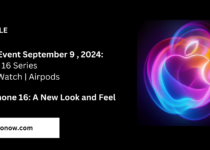How to Keep Your Images Safe from Deepfakes with PhotoGuard – Things you must know
MIT’s Computer Science and Artificial Intelligence Laboratory (CSAIL) have developed a technique called “PhotoGuard” that uses minuscule alterations in pixel values to disrupt an AI model’s ability to manipulate images.
Key points about PhotoGuard:
- It is an AI tool that protects images from unauthorized manipulation by AI models.
- It works by adding imperceptible perturbations to images that disrupt the ability of AI models to understand what the images are.
- The perturbations are generated using two different methods: an encoder attack and a diffusion attack.
- PhotoGuard has been shown to be effective against a variety of AI models, including DALL-E and Midjourney.
- The technology is still under development, but it has the potential to be a valuable tool for protecting the authenticity of images.
The tool named PhotoGuard acts as a safeguard, making small imperceptible changes to photos that protect them from being manipulated. Even if someone attempts to use an editing app like Stable Diffusion, which is based on generative AI, on an image protected by PhotoGuard, the result will appear unrealistic or distorted.
Need of Photoguard image protection
Hadi Salman said that publicly posted images can be taken by anyone and could be worst be manipulated in bad looking position and could be used for blackmailing us
He also stated that photo guard is an attempt to solve the images being manipulated maliciously. The tool could, for example, help prevent women’s selfies from being made into non-consensual deepfake pornography.
As AI models become more sophisticated, they are becoming increasingly capable of generating or manipulating images in realistic images. This has led to a number of concerns about the potential for these models to be used to manipulate our images in malicious ways.
For example, someone could take your image and use an AI model to modify it to make it look like you are doing something that you are not actually doing. This could then be used to blackmail you or damage your reputation.
There are a number of attempts to solve the AI Image manipulation problem of our images being manipulated maliciously by these models. One approach is to use watermarks or other security measures to make it more difficult to manipulate images without being detected.
The question arises in our mind Can AI detect AI-generated images? The answer is yes we can develop tools that can detect when images have been manipulated. One of which is the Photoguard image protection tool.
How do I protect my photos from DeepFake?
To protect your photos from DeepFake or AI Image manipulation, be mindful of what photos you share online. Don’t share photos of your face from different angles or in compromising or embarrassing situations.
Keep your social media accounts private and be careful about what apps you use. If you see a video or photo that looks too good to be true, it probably is.
Some signs of a DeepFake include an unnatural or plastic face, unnatural movement, and an inconsistent background. You can also use deepfake detection software to help identify DeepFakes.
How does Photoguard work?
PhotoGuard is a deepfake detection software that works by adding imperceptible changes to images, called perturbations, that disrupt AI models’ ability to understand what the image is. These photoguard perturbations are invisible to the human eye but can be easily read by machines.
When an AI is trained on a dataset of images, it learns to identify patterns in the images that correspond to certain objects or features. These patterns are then used to classify new images. However, if the patterns in an image are disrupted, the AI will be unable to classify the image correctly.
PhotoGuard works by adding these perturbations to images. This makes it difficult for AIs to classify the images, which makes it more difficult for them to be used to create deepfakes.
It’s important to recognize that there is no one-size-fits-all solution to malicious image manipulation. However, by developing diverse approaches, we can help safeguard our images from potential harm.
Some additional measures you can take to protect images from AI manipulation are listed below:
- Be aware of the risks and potential for malicious manipulation, and take necessary precautions.
- Be mindful of where you share your images, avoiding public platforms where anyone can access them.
- Utilize watermarks and other security measures to discourage manipulation.
- Exercise caution when using photo editing apps, as some may secretly employ AI to manipulate your photos without your consent.
Can AI detect AI-generated images?
Yes, AI can detect AI-generated images. There are a number of deepfake detection software programs that use AI to identify signs of manipulation in images and videos. These programs can look for things like unnatural facial expressions, inconsistent lighting, and artifacts that are common in AI-generated images.
Here are some of the deepfake detection software programs that are available:
- Deepfake Detection Toolkit (DDT): This is a free and open-source software program that can be used to detect deepfakes. It is available for Windows, macOS, and Linux.
- FakeApp Detector: This is a free software program that can be used to detect deepfakes created with the FakeApp software. It is available for Windows and macOS.
- DeepFake Detector: This is a paid software program that can be used to detect deepfakes. It is available for Windows and macOS.
How to access the Photoguard app?
PhotoGuard is not yet available to the public. It is still under development by researchers at the University of California, Berkeley. However, you can stay updated on the PhotoGuard website for information on when it will be released.
Conclusion
PhotoGuard is a promising new technology for protecting images from unauthorized manipulation by AI models. It uses two attack methods, the encoder attack and the diffusion attack, to generate imperceptible perturbations that disrupt the ability of AI models to understand what the images are.
Both of these attack methods are effective at disrupting the ability of AI models to understand images. The encoder attack is more effective at preventing AI models from understanding the image at all, while the diffusion attack is more effective at making the AI model understand the image incorrectly.
The two attack methods are complementary, and they can be used together to create even more effective perturbations. By using both attack methods, PhotoGuard can make it very difficult for AI models to understand images that have been protected by PhotoGuard.
PhotoGuard is still under development, but it has the potential to be a valuable tool for protecting the authenticity of images. As AI models become more powerful, it will become increasingly important to have tools that can protect images from unauthorized manipulation.
Must Read: OpenAI Announces Launch of ChatGPT Android App Next week: Here’s how to register




2 Comments